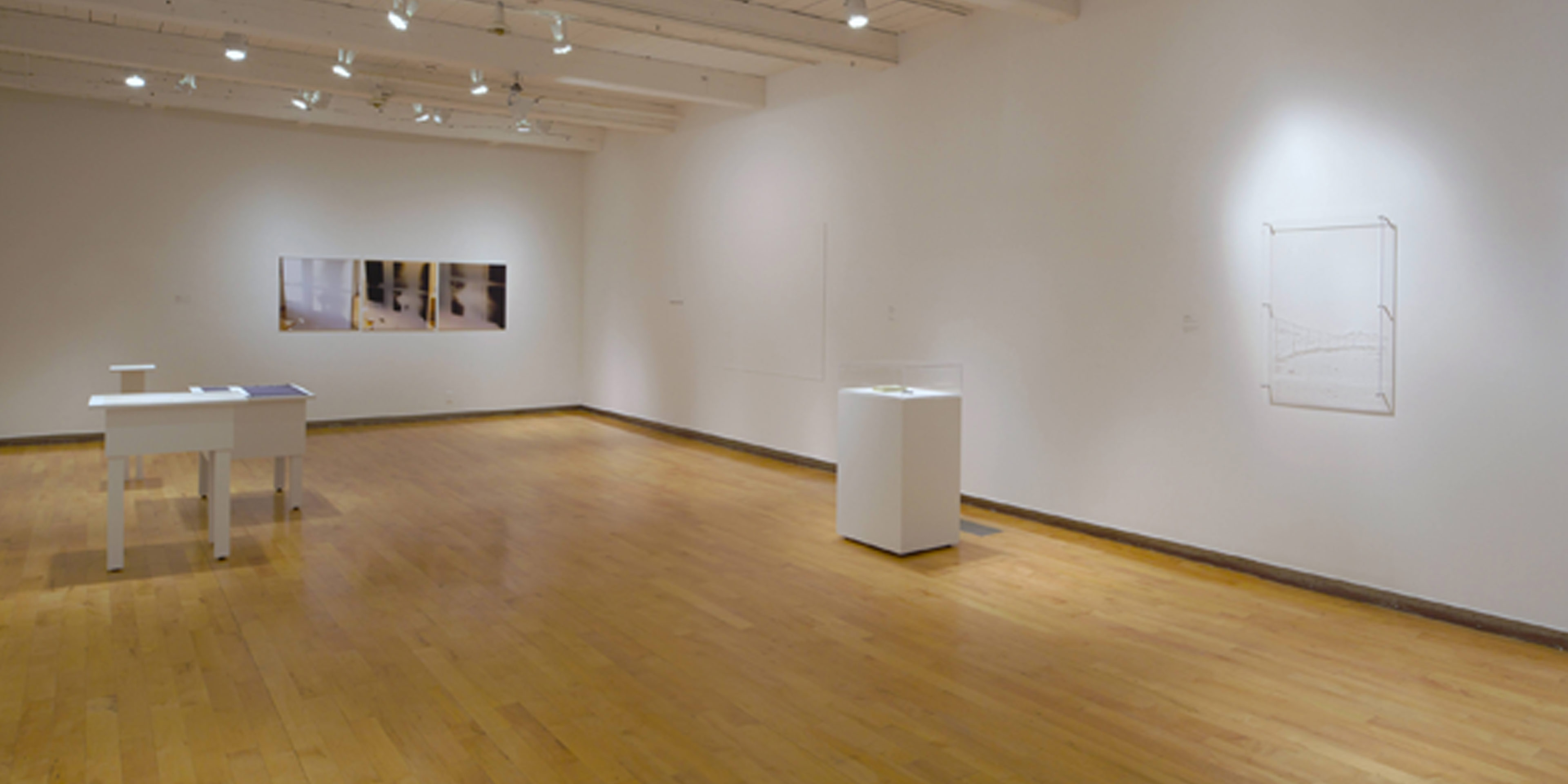Archive, Archive Exhibitions, Exhibition
- February 13 – July 5, 2010
- MASS MoCA
Amidst a world saturated with a relentless stream of images and stimuli, moments of visual quiet can take on unexpected power. InVisible: Art at the Edge of Perception featured works by artists who explore the line between visibility and invisibility and, in doing so, invite viewers to participate in a deeper act of looking. The exhibition examined the demands and subtleties of the viewing experience and included works that test the limits of perception. Drawing attention to what is often unnoticed at first glance, many of the works heighten our awareness of inconspicuous details of the artists’ materials or those of mundane objects. Others focus on the spaces in our surroundings that are often overlooked. Some of the works, pushed to the edge of legibility, disappeared into the gallery space itself and diminished the distinction between medium and ground. Several artists manipulated ephemeral phenomena, harnessing the potential of light and shadow, while still others used strategies of erasure and found the “something” in what might be otherwise described as “nothing.”
InVisible brought together a small selection of international artists working in a variety of mediums, and featured Uta Barth, Christian Capurro, Joanne Lefrak, Janet Passehl, Jaime Pitarch, and Karin Sander. Curated by Katia Zavistovski, an intern from the Williams College Graduate Program in the History of Art, InVisible: Art at the Edge of Perception was part of the continuing series of MASS MoCA exhibitions presented in collaboration with the Clark Art Institute in support of MASS MoCA and the Williams College Graduate Program in the History of Art.
Uta Barth’s photographic work inverts the traditional distinction of foreground and background, and instead focuses on unoccupied spaces and interstitial moments in our everyday lives. Works such as Untitled (07.14) draw attention to the incidents that lie at the periphery of perception. The artist has said, “The question for me is how can I make you aware of your own activity of looking, instead of losing your attention to thoughts about what it is that you are looking at.” The subject of Barth’s photographs is, in essence, the act of looking itself, bringing attention to that which is so familiar that it has become invisible.
Christian Capurro employs photography, drawing, and site-specific installations in his artistic practice. InVisible included his series of works on paper entitled Compress. These works are created through the pressure of erasing illustrations from magazine pages. The artist lays one page on top of another and, by erasing the top page, imprints images onto the bottom one. The shapes, figures, and text on the receiving page are then painted over with correction fluid, a means of literally “whiting-out” the image. Delicate, intricate, and haunting, Compress presents the viewer with ethereal traces of physical gesture and form.
Joanne Lefrak creates surprisingly detailed “drawings” using light and shadow. Working with paper, plastic, and Plexiglas, she draws using processes of subtraction — cutting, burning, and scratching into the surfaces of these materials. In two new works created for the exhibition, Trinity Site (Ground Zero) and Trinity Site (At the Instrumentation Bunker), light passing through etched Plexiglas sheets casts shadows onto the gallery wall. The lines incised into the Plexiglas are barely visible and create wraith-like silhouettes. However, the images are crisp, and the shadow’s gradations of gray convey depth and space in almost photographic detail.
Poet and visual artist Janet Passehl creates subtle sculptures out of swaths of cloth. In her Grain series, two of which were exhibited at MASS MoCA, Passehl cuts her fabric into geometric shapes, discretely stains it with tea, folds it into specific configurations, and then carefully irons it to form deliberate creases. The lack of any representational imagery draws the viewer’s attention to the inconspicuous characteristics of the texture and weave of the raw material — the cloth itself is the subject of the work. The ironed folds and delicate working of color take the place of the drawn line, creating, as the artist has said, “a mark that isn’t a mark.”
Jaime Pitarch revels in taking apart familiar objects and reassembling them to create new meanings. Preliminary Drawings for Show, Erased, is a sketchbook in which all of the drawings and text have been erased. The resulting rubber eraser fragments are compressed and reconstituted into a whole rectangular eraser, thus embodying the artist’s transformation of materials and ideas. 106 Layers, an installation of 106 layers of latex paint applied directly onto the museum’s wall, took over two weeks of manual labor by the artist to make. Devoid of any narrative elements, 106 Layers was essentially invisible, inseparable from — and disappearing into — its surroundings.
Karin Sander believes that a work of art should simultaneously reveal and conceal. Her polished wall pieces, nearly immaterial and verging on invisibility, are created by repeatedly sanding layers of emulsion paint on a given section of wall with increasingly finer shades of sandpaper. Polished to a liquid sheen resembling lacquer or porcelain, the smooth texture of the glossy white plane stands out against the matte wall surrounding it. Capturing nuanced changes in light, Sander’s Wallpiece reflects vaporous impressions of the gallery space in its mirror-like surface. The resulting images are ethereal apparitions that change as the viewer moves through the space.
Download the exhibition brochure.
This exhibition is made possible by the Sterling and Francine Clark Art Institute in support of MASS MoCA and the Williams College Graduate Program in the History of Art. Additional support provided by Institut Ramon Llull, Barcelona.
Uta Barth, Untitled (07.14), 2007
Mounted color photographs, 4 panels, each panel: 30 × 37.5″
Overall dimensions: 30 × 153″
Courtesy of the artist and Tanya Bonakdar Gallery


